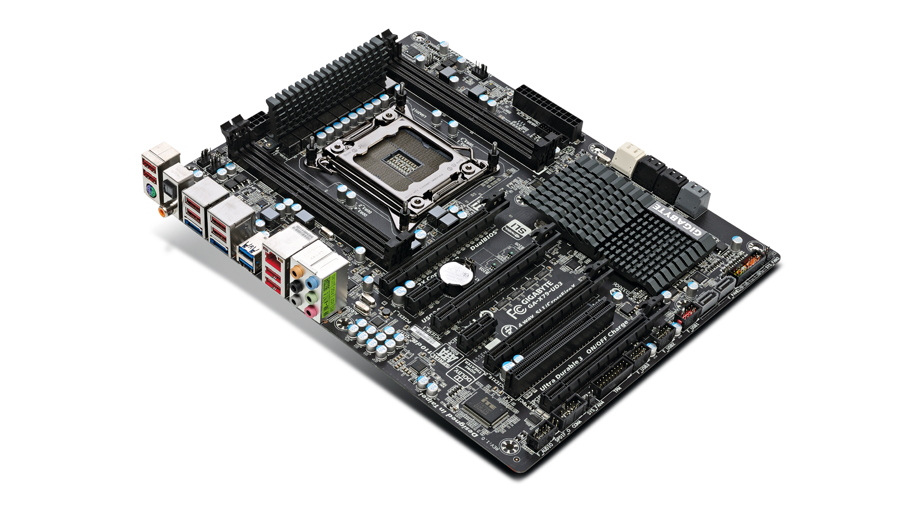Best of the best: 10 top high-performance computing upgrades on test
High-end PC processors and motherboards rated
And the winner is... Gigabyte X79-UD3

Last month our gaming performance exposé blew apart expectations, slaughtered sacred cows and generally caused a kerfuffle. We proved there was very little benefit to be gained from unloading a whole hill of cash on the finest PC components on the market.
When it comes to high performance computing and particularly digital content creation, however, things are very different. The argument goes something like this: If you're playing a game, the performance metrics are framed in terms of fast enough. When you're cranking out 60 frames per second, an extra 30 gets you absolutely nowhere.
Not so with, say, video encoding where every frame per second gets the job done quicker. That's useful if you're honing your own video, iteration after iteration, and find yourself twiddling thumbs during the encode process.
The same goes for tasks, such as professional rendering or heavy duty office apps and big database processing in Excel. The faster your PC, the more work you can get done.
In theory, the money spent on a more powerful machine is an investment in long-term productivity. Put it this way, when we told one of our back-office number-crunching brainiacs just how fast the Xeon eight-core processor tore through the huge Excel spreadsheet he gave us for testing, he nearly cried. The Xeon was 11 times faster than his Core 2 Duo box. Remarkable.
The right combo
That said, not all applications scale so nicely. Photoshop is a perfect example of a mixed workload application; not all of its filters and transformations are well threaded.
Still, the first conclusion we can draw is that the high end clobber does have something to offer. Okay, some aspects of the Intel X79 platform make no sense on the desktop. We compared, for instance, a Core i7 3960X running in dual-channel and quad-channel memory modes. The latter offered no real-world benefit - it only showed a difference in memory bandwidth tests.
Sign up for breaking news, reviews, opinion, top tech deals, and more.
But overall, there's no doubt that the X79 combined with an Intel six-core i7 or eight-core Xeon processor is by far the fastest system you can buy. Whether the Xeon is worth double the i7, however, is another matter.
If you're willing to overclock the Core i7, you can close most of the performance gap on the locked-down Xeon. If you're unwilling to compromise stability and reliability, the Xeon processor is unbeatable.
The mid-ranger
Further down the scale, the Intel Core i7 2700K combined with the aggressively priced Asus P8Z68-V LX makes an impressive mid-range solution at around £325 combined. Throw in a little overclocking and you have a very quick content creation system.
As for the AMD alternative, the FX is very handy with efficiently threaded software. If, for instance, you want to build an affordable video encoding box, you could do a lot worse. However, if you are after a multi-purpose PC, we'd argue you either spend a little less and go with the cheapest AMD Phenom II X6 or step up to the Core i7 2700K.
Technology and cars. Increasingly the twain shall meet. Which is handy, because Jeremy (Twitter) is addicted to both. Long-time tech journalist, former editor of iCar magazine and incumbent car guru for T3 magazine, Jeremy reckons in-car technology is about to go thermonuclear. No, not exploding cars. That would be silly. And dangerous. But rather an explosive period of unprecedented innovation. Enjoy the ride.